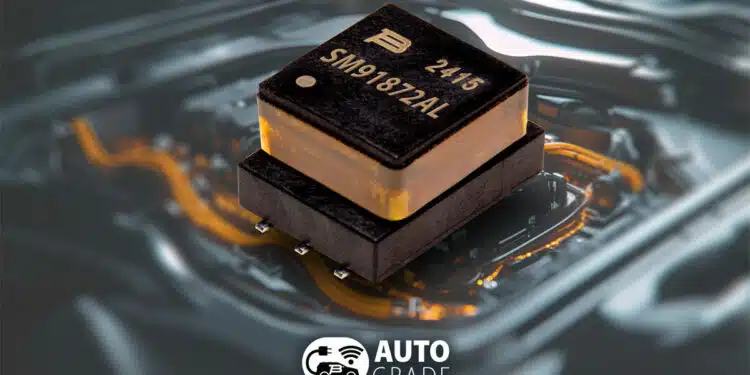Bourns, Inc., a leading manufacturer and supplier of electronic components for power, protection, and sensing solutions, announced its latest AEC-Q200 compliant, automotive-grade Battery Management System (BMS) transformer.
The Bourns® Model SM91872AL is a single-channel reinforced isolation transformer, which is constructed with a fully automated over-molding process making it a cost-effective and high-quality solution for BMS signal applications in energy storage systems and electric vehicles (EVs).
This BMS transformer offers a working voltage of up to 1000 V and a Hi-PoT isolation voltage up to 4000 VAC with an extended operating temperature range of -40 to +125 °C. In addition, the Model SM91872AL transformer has a creepage/clearance distance of greater than 10.0 mm, and its reinforced isolation complies with IEC 60664-1 and IEC 62368-1 standards.
The Model SM91872AL is manufactured with a fully automated process for high quality and cost effectiveness. This BMS transformer offers a working voltage of up to 1000 V and a Hi-PoT isolation voltage up to 4000 VAC with an extended operating temperature range of -40 to +125 °C.
The Bourns® Model SM91872AL BMS signal transformer is available now and is RoHS compliant.
Features
- Fully automated manufacturing with overmolding process
- Reinforced isolation, high reliability and compact size
- Working voltage: up to 1000 VDC
- Hi-Pot: 4000 VAC, 1 mA, 60 s
- Design construction: Reinforced insulation between primary and secondary per IEC 60664-1 & IEC 62368-1
- Clearance distance >10.0 mm, Pollution degree 2, Material group CTI I
- Creepage distance >10.0 mm, Overvoltage Category II
- Expanded temperature range: -40 to +125 °C
- RoHS compliant
- AEC-Q200 compliant
- Automotive grade
Applications
- Battery Management Systems
- Energy Storage Systems
Source: Bourns































